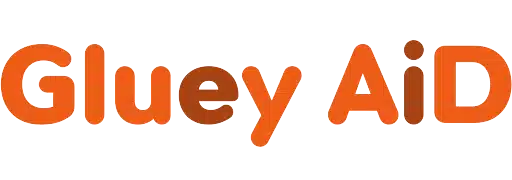Whether you are a professional or just a DIY enthusiast, glue is one of the essential tools that might make it challenging to complete your task without it.
This E6000 Vs Epoxy article with a detailed discussion about the e6000 and epoxy to illustrate the key differences and similarities that can help you do your job easily.
Page Contents
Article Highlights
- E6000 has tremendous adhesion, being flexible after curing with remarkable resistance to external impacts with decent usability, which requires precaution due to toxicity.
- Epoxy is a glue that comprises a two-part formula with incredible adhesion strength, which has better weather resistance but has a strong odor.
- One has better adhesion strength with various materials, and the other is better with flexibility after curing with numerous resistances.
E6000 and epoxy are the leading glues in the current market and are the most popular among consumers.
But in this article, you can explore these flagship products and know their actual pros and cons when they are compared side by side.
Learn More: Hot Glue Vs E6000
E6000 Vs Epoxy
About E6000
From Eclectic Products, E6000 is one of the most popular and widely used glues in today’s market. Easy availability and usability made this product a versatile one among consumers day by day.
This clear glue is manufactured with solvent-based material consisting of tetrachloroethylene and butadiene copolymer.
E6000 is renowned for its adhesion strength and resistance to different impacts. Firstly, the glue is compatible with different materials like glass, metal, wood, fiberglass, ceramics, masonry, concrete, leather, rubber, vinyl, plastics, etc.
E6000 is used to repair, seal, attach, and hold required items.
Therefore, for e6000, glue is used to repair shoes, fix cell phones and electronic devices, repair toys, make jewelry, decorate, and do different DIY-related tasks.
One of the key features of the e6000 is it becomes flexible after curing. E6000 takes less than 4 minutes to set and 24 hours to cure.
When the glue cures, it consistently performs well with time with its resistance properties. It resists moist conditions, heat, UV exposure, chemicals, flames, abrasion, and shock.
More specifically, it withstands between -40 to 93 ºC and resists UV rays, which helps to prevent getting yellowish with time.
This glue’s usability is one of its important features, as its narrow nozzle helps dispense glue as needed and as much needed.

Learn More: Goop Glue vs E6000
About Epoxy
Epoxy is a type of glue that delivers robust bonds with incredible strength with various materials.
It consists of two materials, which are resin and hardener. The ratio of these materials depends on the particular products.
Epoxy is mainly used for different types of DIY projects and repairs indoors and outdoors. For tight-fitting components, this glue performs much better.
Epoxy works proficiently on various materials such as metal, ceramic, wood, glass, plastics, tile, fiberglass, concrete, stone, aluminum, steel, rubber, vinyl, leather, masonry etc.
This can be used for repairing stuff, sealing gaps, decorating, repairing gutters, or roofing; the resin is also used for different types of DIY projects, etc.
With strong bonding capabilities, the epoxy is sustainable against moisture, heat, and chemicals. Also, it doesn’t get yellowish with time.
The epoxy is not recommended to come into contact with eyes and skin before curing. It can irritate the skin.
Therefore, it is recommended to use gloves and goggles to ensure proper ventilation while using the glue.
Epoxy takes 5 minutes to set and 24 hours for a complete cure. Sometimes, it takes even a few days for curing, depending on different factors.
Many products in the market come with a double compartment to carry the resin and hardener that dispenses both materials in the appropriate amount as needed.

Learn More: Gem-Tac vs E6000
Which One is Better? E6000 or Epoxy?
Comparing the adhesion strength of these two glues, the epoxy delivers better adhesion with several materials better than e6000.
But from the point of view of usability, the e6000 is much easier as it doesn’t require to be mixed to prepare the glue.
The main difference between e6000 and epoxy is that epoxy doesn’t get as flexible after curing as e6000.
Also, the e6000 is much more sustainable in terms of different external impacts. Excluding these facts, both glues have a strong odor and are toxic.
If you are sensitive to odor, follow the E6000 Vs E6000 Plus article.
| Properties | E6000 | Epoxy |
|---|---|---|
| Tensile Strength in Average | 3200 psi | 2000 to 7000 psi |
| Temperature Resistance in Average | -40° to 93° C | 65° to 150° C |
| Resistance | Water, Temperature, UV Ray, Chemical, Flame, Abrasion, Shock | Water, Temperature, Chemical, Shock |
| Elongation in Average | 900% | 2%-10% |
| Setting Time | 2 to 4 minutes | 5 minutes |
| Curing Time | 24 hours | 24 hours to 72 hours |
| Materials | Tetrachloroethylene and Butadiene Copolymer | Resin and Hardener |
| Color after Curing | Clear | Clear |
Learn More: Liquid Fusion Glue Vs E6000
Editor’s Opinion
If you are looking for glue that has incredible strength in adhesion and generates robust bonds, then epoxy is the best option.
But the e6000 is a better option for flexible nature after curing alongside better sustainability and usability.
Each is better in different scenarios, depending on your type of task and the criteria that need to be fulfilled by one of these glues.




